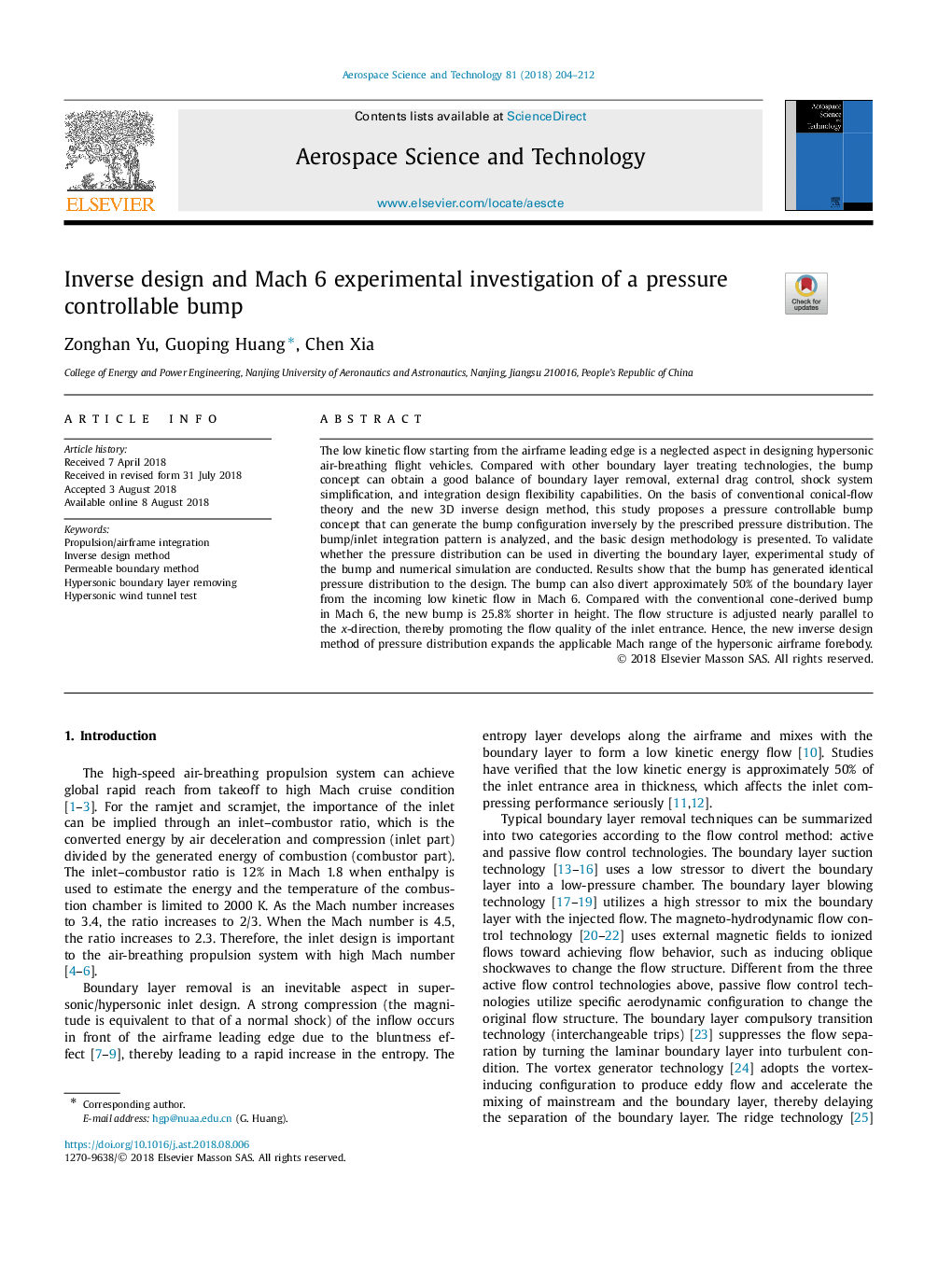| Article ID | Journal | Published Year | Pages | File Type |
|---|---|---|---|---|
| 8057215 | Aerospace Science and Technology | 2018 | 9 Pages |
Abstract
The low kinetic flow starting from the airframe leading edge is a neglected aspect in designing hypersonic air-breathing flight vehicles. Compared with other boundary layer treating technologies, the bump concept can obtain a good balance of boundary layer removal, external drag control, shock system simplification, and integration design flexibility capabilities. On the basis of conventional conical-flow theory and the new 3D inverse design method, this study proposes a pressure controllable bump concept that can generate the bump configuration inversely by the prescribed pressure distribution. The bump/inlet integration pattern is analyzed, and the basic design methodology is presented. To validate whether the pressure distribution can be used in diverting the boundary layer, experimental study of the bump and numerical simulation are conducted. Results show that the bump has generated identical pressure distribution to the design. The bump can also divert approximately 50% of the boundary layer from the incoming low kinetic flow in Mach 6. Compared with the conventional cone-derived bump in Mach 6, the new bump is 25.8% shorter in height. The flow structure is adjusted nearly parallel to the x-direction, thereby promoting the flow quality of the inlet entrance. Hence, the new inverse design method of pressure distribution expands the applicable Mach range of the hypersonic airframe forebody.
Related Topics
Physical Sciences and Engineering
Engineering
Aerospace Engineering
Authors
Zonghan Yu, Guoping Huang, Chen Xia,
